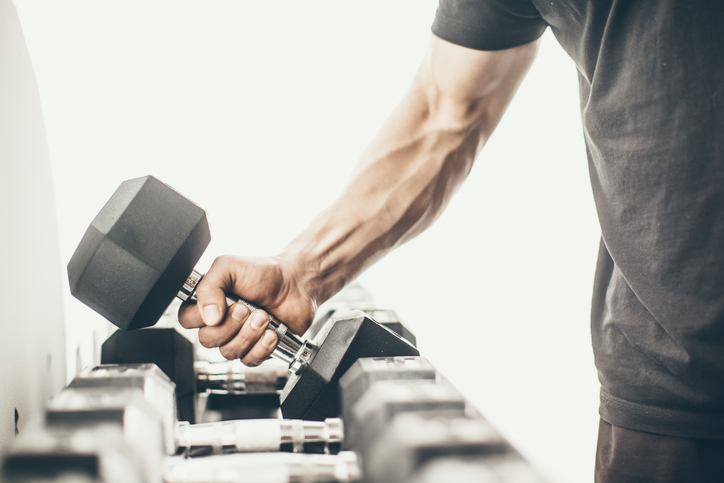To call someone a dumbbell suggests they’re not so smart, but to use a dumbbell for fitness is actually brilliant. Amid today’s high-tech workout wonders, the humble dumbbell and barbell remain strength-training staples
The word “dumbbell” originated in Tudor England—referring to equipment used by bell ringers to simulate the action of a bell rope. Since it took a fair amount of strength to ring a heavy church bell, novice ringers had to develop their arm strength with a rope connected to a metal weight. Swinging the weighted rope against an imaginary bell produced no sound, thus it was silent, or ‘dumb.’ Eventually, the apparatus came to be known as a dumbbell.
When strongmen started to make their own equipment to develop an impressive physique, they kept the name, even though the shape and form had changed. By the early 17th century, the familiar shape of the dumbbell began to appear—the rope was replaced with a straight bar and rounded weights were attached at both ends.
There are three main types of dumbbells:
1. Adjustable dumbbells are plate-loading dumbbells where individual plates can be added onto a straight bar and secured with either screw on nuts or spring collars. The downside is that some feel it bothersome to switch weights mid-workout. On the upside these are great space savers and can be very cost effective.
2. Fixed-weight dumbbells are found in most gyms and fitness centers. They are individual weights created in a dumbbell shape. Inexpensive varieties consist of cast iron, sometimes coated with rubber or neoprene for comfort, and even cheaper versions consist of a rigid plastic shell filled with concrete. The only downside to fixed-weight dumbbells is that they take up a lot of space if you want dumbbells of several different weights.
3. “Selectorized” dumbbells are an adjustable type wherein the weight is changed mechanically. The user simply places the handles into a docking station, turns a knob, and the desired amount of weight is attached. This can make it easy to change the weight of the dumbbell between exercises. Selectorized dumbbells often include stands that double as storage for additional weights. They are a great solution for small, personal facilities where space is an issue but they can be expensive.
Exercises
The following dumbbell exercises can be done just about anywhere. Choose a weight that allows you to maintain correct form while challenging your body. Unless otherwise noted, perform two to four sets of each exercise, with 12 to 15 repetitions per/set.
Sumo squats
Hold the end of one dumbbell so that the other end points towards the floor. Stand with your legs a little wider than hip-width apart. Lower into a squat, ensuring your body weight is focused on your heels. (The dumbbell will hang between your legs). As you push up through your heels, lift one leg out to the side of your body as if to simulate a sumo wrestler. Replace the foot to the floor and return into a squat, then repeat on the other side.
Push up with one-arm row—Intermediate to Advanced level only
First, assume a pushup position using light-weighted dumbbells as handles. Perform one pushup. When you return to the “up” position, pull one dumbbell into your side to perform a one-armed row. Then replace the dumbbell back to the floor and perform another pushup before repeating the one-arm row on the other side. It’s very important to focus on contracting your core throughout this exercise to protect your low back.
Front raises with hold
Hold the dumbbells in front of you at shoulder height, thumbs facing up. Leave one dumbbell in the start position, lower the other to your side and return to the start. Repeat on opposite side, being careful not to swing the weights.
One legged, double tricep kickbacks
Balance your body weight on one heel and lean forward at the hips with the other leg straight out behind you. Hold the dumbbells with your palms facing in, towards your body. Start with your elbows bent at a 45-degree angle and then straighten your arms back while contracting your triceps. Perform 8 to 12 reps on one leg before switching to the other side to complete a set.
Alternating dumbbell curls
Hold the dumbbell so that your palms are facing upwards and your elbows are at your sides. Curl one dumbbell upwards without moving your elbows from your sides. Focus on contracting your biceps while keeping your wrist straight. As the first arm is returning to the start position, begin the same exercise on the other arm.


